Lenny Paul Haskins is a violent child-sex trafficker from Las Vegas who was sentenced last year to 40 years in prison. In 2013 he was even pimping from behind bars.
In 2015, he was prosecuted and convicted in Northern Virginia for trafficking a 15- and 17-year-old. Both girls were runaways from the foster care system in California. He brought them to Northern Virginia because he knew there were buyers in this area, and he began pimping them out of hotels, using internet online services to advertise them.
He set a quota of $1,000 a day that the teens were forced to bring in, and he used violence and drugs to control them. During the trial it was revealed that he had been trafficking young women and girls since at least 2006 and had fielded thousands of calls from buyers of sex.
Some might think that this is an isolated case, but for a recent conference, one group made a presentation from a case law database of Virginia human trafficking cases where there was an arrest, charge, prosecution and/or conviction. It demonstrated that far from being a single case, Haskins was one of hundreds of sex traffickers using Virginia to traffic young women and children.
Although labor trafficking is also taking place in Virginia, there have been fewer successes in the courts on these cases. What is clear is that Virginia has a problem — the National Human Trafficking Resource Center notes that since 2007 Virginia has had over 706 reports of human trafficking. In 2015, there were 145 calls reporting high indicators for human trafficking cases.
***
In the Virginia cases, we found that while there are some differences in the way traffickers operate, the similarities are striking.
More than 75 percent of the traffickers used social media both to recruit victims, as well as to advertise them to buyers. Some victims in Virginia were as young as 13. According to the Justice Department, more than half of known victims in the U.S. are younger than 17.
Unlike illegal drugs or weapons, a child can be sold repeatedly. Over and over and over again. We found that traffickers go literally door to door in apartment buildings and/or strip motels attempting to sell women and children. Another business model is the store-front brothel. Traffickers use massage parlors, bars, cantinas, and some strip clubs as fronts for brothels.
The internet is the 21st century purveyor of sex trafficking and prostitution. And it is readily available at each and every place a computer is located. Traffickers post photos and ads of the women and children they control and for a small fee, predators pay to connect with them online.
***
Despite all the evidence that proves Virginia has a pervasive trafficking problem, our commonwealth’s governments and citizens have been seemingly asleep while the bad folks have been growing in numbers.
Virginia needs a serious wake-up call and that is the purpose of Virginia Takes The Lead (VTTL), a grassroots collaboration of anti-trafficking organizations and agencies from across the commonwealth.
After hosting an event on Aug. 1 at VCU to bring together those already engaged in anti-trafficking work in their own communities, VTTL is building a Virginia-wide network to help the Commonwealth of Virginia become a leader in the fight against human trafficking and in support of its survivors.
We view our quest as similar to assembling a picture puzzle. On the front of the puzzle box is a beautiful picture of what Virginia will look like when human trafficking is eradicated, but it is obvious the box is missing a lot of pieces. The first step is to determine what pieces we do have, so we know what we are missing. Scientifically, this involves a two-part process of creating a virtual map — first of the problem in our state and, second, of those engaged in effecting a solution.
Our mapping is built partly on our case law database, which identifies traffickers — as well as where they traffic — from cases that have already been investigated, but it also entails working with individual Virginia communities to help them identify “hot spots” and high-risk areas. This pro-active approach is critical for anti-trafficking work.
At the same time, we are mapping anti-trafficking organizations, including shelters, service providers, advocacy organizations, and others, what they are doing and where they are doing it. Once we know what we have, we can start finding or creating the pieces we need to complete our puzzle.
These two sets of virtual maps will be available to everyone who wants to participate in Virginia Take the Lead.
Sex and labor traffickers have used Virginia for their trafficking because Virginians have not understood their modus operandi. But this situation can change if we work together to create awareness and inspire action.
Human trafficking is a crime against humanity that preys on the vulnerable. No one is immune, as trafficking crosses all racial, social, and economic lines and negatively impacts us all. We all have a stake in this outcome, and if we work together, we can finish this puzzle and significantly enhance the quality of life across the commonwealth.
Source: http://m.richmond.com/opinion/their-opinion/guest-columnists/article_f796e42b-c483-51b4-bc44-269933c5c6c7.html?mode=jqm
